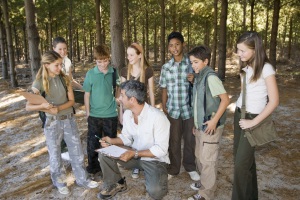What is the Journey Method?
Posted by PLB Blogger · Leave a Comment

 The Journey method is a mnemonic strategy which is similar to another called “Roman Room.” It is similar to the method of loci, and also makes use of a familiar journey or route to remember a list of objects, events of facts. In the strategy, the user associates the facts to be remembered to various landmarks that are a part of the journey.
The Journey method is a mnemonic strategy which is similar to another called “Roman Room.” It is similar to the method of loci, and also makes use of a familiar journey or route to remember a list of objects, events of facts. In the strategy, the user associates the facts to be remembered to various landmarks that are a part of the journey.
How does it work?
The journey method makes use of the principle of linking and pegging, thereby making it a successful easy to use mnemonic strategy. The method of associating the facts to be remembered to the route (linking) and landmarks (pegging), ensures easy retrieval of the facts.
The roman room strategy consists of associating the objects with the items within the room or pegs. For example if a person had to remember a list containing apples, tea bags, soap, the individual may imagine his kitchen and mentally picture a bag of apples on his kitchen counter, tea bags steeping in a kettle of water and a soap bar placed near the sink. Thus a glimpse into his kitchen will remind him of the list of objects that he needs to get.
The journey method on the other hand, incorporates the use of a familiar route i.e. the route from your front door to the mailbox and landmarks like the front door, the porch, lawn, etc, and associating the same with the list to be remembered. The journey method has been found to be more effective than the Roman room method due to its use of a narrative style of remembering.
Uses in the classroom:
Training students in the use of the strategy is a simple process. Once the strategy is explained, modeled and demonstrated, teachers can provide the students with ample opportunities to practice the same in order to strengthen the use of the strategy. To help you get started here are a few ideas:
A walk to remember: Take a stroll around the school stopping at various landmarks and presenting the material, stressing on the points you want remembered. Once back in the class, ask the class what they remembered being presented at each landmark.
Treasure hunt: Create a map with pictorial representations of the landmarks. At each landmark, stick an index card with the information or the list of items to be remembered. Students are assigned into groups, given a map and instructed to find each index card or note down the information near each landmark. The group that finishes first wins. As a closure activity, randomly ask students what information they found near each spot.
Route map: Write down the information on the board, and ask the students to make a rough sketch of a familiar route along with the landmarks. Next ask them to correlate the information with the landmarks. Instruct the students to sit in pairs, exchange their route maps and to take turns and narrate their routes along with the information while the other student checks to see if the map is accurately followed.
Discuss here: How do you help students recall information after field trips?
Learn more: Take a course



